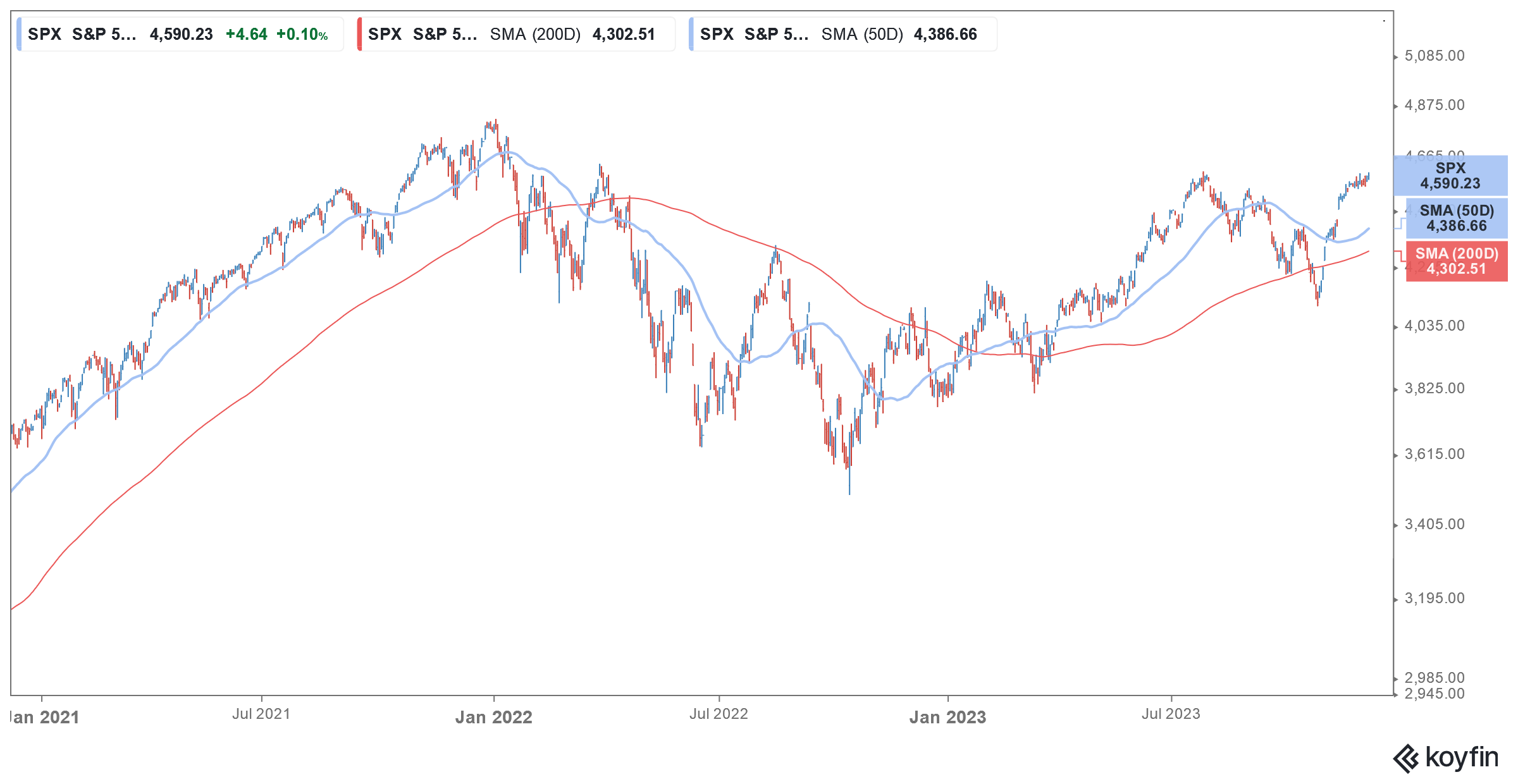US Jobs Report Surprises on the Upside Ahead of Fed’s December Meeting
Please note that we are not authorised to provide any investment advice. The content on this page is for information purposes only.
The nonfarm payroll data released this morning showed that the US economy added 199,000 jobs in November which was better than the 190,000 that analysts were expecting and well ahead of the October reading of 150,000.
The unemployment rate also fell to 3.7% which was lower than the 3.9% that economists were expecting. Notably, the nonfarm payroll data comes shortly after the ADP report showed that the private sector added only 103,000 jobs in November which was significantly below the 128,000 that analysts were expecting.
Key takeaways from the November jobs report
Meanwhile, the nonfarm payroll data showed that average hourly wages rose 0.4% on a month-on-month basis and 4% on an annual basis. The readings were in line with estimates and show that wage growth, which has been among the factors fuelling inflation, continues to moderate.
In its release, the Bureau of Labor Statistics said, “Employment growth is below the average monthly gain of 240,000 over the prior 12 months but is in line with job growth in recent months. In November, job gains occurred in health care and government. Employment also increased in manufacturing, reflecting the return of workers from a strike. Employment in retail trade declined.”
How markets reacted to the November jobs report
While U.S. markets fell marginally after the November jobs report was released, it subsequently recovered and stocks were in the green at the time of writing.
Commenting on the November jobs report, Robert Frick, corporate economist with Navy Federal Credit Union said, “What we wanted was a strong but moderating labor market, and that’s what we saw in the November report.” He pointed that “healthy job growth, lower unemployment, and decent wage increases. All this points to the labor market reaching a natural equilibrium around 150,000 jobs [per month] next year, which is plenty to continue the expansion, and not enough to trigger a Fed rate hike.”
Fed’s December meeting
Meanwhile, the November jobs report comes a few days ahead of the Fed’s December meeting. The Fed has been on a rate-hiking spree since March 2022 and started with 25 basis points in March 2022 followed by 50 basis points in May. In the next four meetings of 2022, it raised rates by 75 basis points – a pace not seen in years – but toned down the hike to 50 basis points in December. The Fed has so far raised rates four times in 2023 by 25 basis points each.
Meanwhile, US inflation peaked in 2022 and has since come down. In October, the PCE (personal consumption expenditure) rose 3% while the so-called core PCE – which excludes the volatile food and energy prices – rose 3.5%.
Notably, gas prices have fallen over the last month which has also put downward pressure on inflation.
That said, the current inflation is still higher than the 2% that the US Central Bank targets. In his speech, Powell admitted that the current inflation is “well above” the Fed’s target but is “moving in the right direction.” Powell said, “while the lower inflation readings of the past few months are welcome, that progress must continue if we are to reach our 2 percent objective.”
In the past, Powell blamed the red-hot jobs market and strong wage growth for fueling inflation. However, data shows that the US labor market continues to moderate which might be a factor that the Fed takes into account while deciding on rate cuts.
As for the December meeting, markets believe that the Fed would hold rates steady and maintain the status quo as was the case in the previous meeting.
Inflation expectations fall
Along with the November jobs data, we also got the University of Michigan consumer sentiment survey which showed that the outlook for one-year inflation fell to 3.1% – down sharply from the November reading of 4.5%. The reading has now fallen to the lowest level since March 2021.
Also, The University of Michigan index of consumer sentiment rose to 69.4 which is 8 points higher than November and tied for the best level of the year since July. Among others, the continued fall in gasoline prices might have led to an improvement in consumer sentiment.
US Treasury yields rose after strong jobs report
Meanwhile, US Treasury yields rose slightly after the November jobs report. Notably, the yields on 10-year US Treasury surpassed 5% in October but have since fallen to around 4.2% as markets now believe that Powell and Co. are at least done with the rate hikes even as the comments on the trajectory of rate cuts might be a bit hawkish.
According to Mona Mahajan, senior investment strategist at Edward Jones, “There’s a trifecta of drivers here. The first is the inflation. Second is the Fed seeming like it may be stepping to the sidelines, and then third is this cooling in the economy that is starting to unfold, but at a very gradual pace.”
Mahajan believes that markets are now factoring rate cuts in the back half of 2024 and added, “It’s almost like a Goldilocks cooling. It’s not too hot. It’s not too cold. And that’s exactly what markets are embracing.”
US inflation is still above the Fed’s target range
US inflation has been sticky partially because of a strong jobs market. Notably, in 2020, the US Central Bank changed its inflation-targeting approach and now targets average inflation of 2% rather than chasing absolute numbers. The mandate gives the Fed more leeway in deciding on monetary policy, unlike the previous where its mandate was to keep inflation below 2% at all times.
While inflation has fallen sharply after the annualized CPI peaked at 9.1% in June 2022, it is still high for comfort. Even as the CME Fed Watch tool shows that almost all traders predict rate cuts in 2024, Powell has disappointed rate-cut proponents on more than one occasion over the past year.






